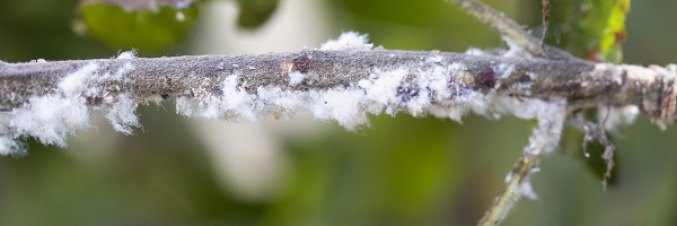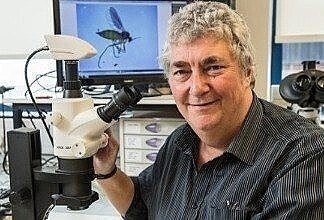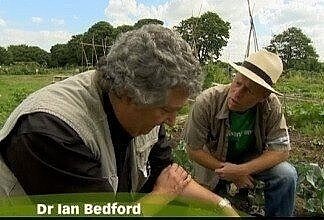
Have you spotted this pest on your apple trees?
5 Minute Read
Dr Ian Bedford tells us everything we need to know about the 'bug of the month' for August, the woolly tree aphid.Aphids, commonly known as greenfly or blackfly, are small, sap-sucking plant bugs of which there are over 500 species in Britain. Whilst some of these species will be Polyphagous (colonising a wide range of different plant types), many others will be Monophagous (existing on a single plant type or a selection of closely related plants, possibly within the same genus).
One example of a monophagous aphid is Eriosoma lanigerum, the Woolly apple aphid, which only colonises and feeds on apple, pyracantha and cotoneaster trees, all of which belong to the rose family (Rosaceae).
One example of a monophagous aphid is Eriosoma lanigerum, the Woolly apple aphid, which only colonises and feeds on apple, pyracantha and cotoneaster trees, all of which belong to the rose family (Rosaceae).
Why are woolly apple aphids harmful to their host trees?
Woolly Apple aphids are a common species in Britain, and so many people will have found them in their gardens where the aphids host plants are grown. They first become active during spring, after spending the winter in a dormant state within nooks and crannies on their host tree. Once the season’s temperatures start to increase, the aphids begin feeding on the tree’s sap after pushing their stylets into the bark.As they feed, they’ll give birth to live young and soon generate a colony on the bark and new shoots. The colony will develop under copious amounts of fluffy light grey wax that the adult aphids secrete from their bodies. This wax shield not only helps to protect the colony from the elements but also from predators.
However, the wax, which can often be mistaken for patches of grey mould on the trees, provides a visual indication of where the aphid colonies are located, which is very useful if the aphids require controlling in commercially grown orchards or perhaps on a cherished apple tree in the garden. The reason why Woolly Apple aphids might need controlling is that besides the messy appearance on the bark, and the sticky honeydew the aphids produce, an established infestation can often cause serious harm to the host tree.
The reason for this is that when the aphids feed, a chemical in their saliva causes lumpy growths to develop on the tree. Growths where the tissue becomes much softer than the surrounding bark, making it easier for the aphids to access the tree’s sap. However, the growths will often split as they become larger, allowing fungal canker disease to establish on the tree.

How to control the woolly apple aphids
Controlling woolly aphids is relatively simple if the infestations are accessible and it doesn’t have to involve using chemical insecticides that could harm the beneficial insects that are on the trees, particularly the pollinators. It will just require using a treatment that removes the wax layer that the colony produces and exposing the aphids to the elements and their predators.This is easily achieved by thoroughly spraying the infested areas with a proprietary soap-based product, such as SB Plant Invigorator, which has been tested and approved for its environmental and plant safety. Repeat the applications as and when required.

About Dr Ian Bedford
Ian has been fascinated by the bug world for as long as he can remember. From studying butterflies on the South Downs as a youngster, he went on to pursue a career in Research Entomology and ran the Entomology Dept at the John Innes Centre in Norwich up until his recent retirement.VISIT WEBSITE

'Bug of the month'
Visit our 'bug of the month' archive.
Every month Ian will share his knowledge on how to protect your plants and gardens from preventable pest invasions while providing valuable insights into the insects regularly found in our gardens.
find out more
Tags: Tree care
Comments (0)
Why not be the first to send us your thoughts?
Leave A Comment
Most popular articles
1
Plastic plant pots dimensions and uses2
Peat vs Peat Free - Choosing the right Potting Compost3
How to Grow Watercress at home in plant pots4
January Jobs5
Our guide to seed sowing compost